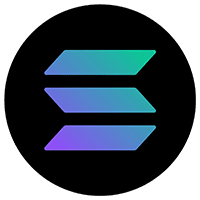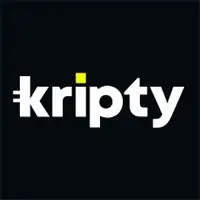
Solana’s blockchain aims at providing its users with a powerful and fast network. This decentralized blockchain helps enable scalable and user-friendly dApps. It's amongst the cheapest networks with an average transaction cost of $0.00025. Besides, it offers fast transactions at an average of 2,532 transactions per second. The network resolves all scalability problems of its competitors, thus ensuring that users don’t have to worry about scaling again. It achieves this by ensuring composability between all the ecosystem projects and having a global state as its network scales. Therefore, players won't have to deal with sharded chains or layer 2 systems.
Briefly about Solana Network
As stated earlier, Solana is a decentralized, open-source network. It’s operated by Solana Foundation, which was founded in 2017. It boasts of fast and cheap services compared to other blockchains. It was created by Anatoly Yakovenko and Raj Gokal. Yakovenko has a background in system design, and he aimed to apply his knowledge towards creating a new blockchain that enables better or faster speeds. It aims to use its architecture to demonstrate that a set of software algorithms can implement a blockchain when used in combination. Therefore, this helps the network remove software since it's always a performance bottleneck. Besides, it achieves faster processing speeds by allowing transaction throughput to scale as the network bandwidth. Its base architecture satisfies all three properties of a proper blockchain, decentralized, secure, and scalable. Theoretically, the architecture can handle 710,000 transactions per second on a gigabit network and 28.4 million transactions per second on a 40-gigabit network. Furthermore, it supports concurrent and safe execution of programs authored in languages like Rust or C.
Solana is a decentralized blockchain built to enable scalable, user-friendly apps & NFTs for the world.CryptoLists.com
Solana is a blockchain that aims to scale to global adoption. Currently, the blockchain offers some of the fastest transaction speeds. It is also a public blockchain platform that uses the Proof of Stake mechanism. The network has an internal crypto ticker known as SOL. This open-source project operates with a cluster formation where nodes form clusters based on their similarities. It has made blockchain easy as its services are swift. Therefore, when two clusters have a similar genesis block, they will merge. If they don’t have a similar genesis block, they discard their existence, and the transaction isn’t verified. These clusters act as validators that serve client transactions while balancing the distributed ledger.
Utility of Solana Network?
It offers an open-source, permissionless network to achieve fast and cheap transactions. The network aims at offering 710,000 transactions per second. Besides, since the network can replicate itself, it can maintain high availability without affecting the transaction rate. It uses Optimistic Concurrency Control, a distributed system technique. It gives its customer the best as the technology is up-to-date, fast and fits the current services. This platform has made transaction faster and safe. The system is also available for users to use and track their tractions any time. Solana's blockchain is one that one can depend on because of its performance and technology that has been invested on. It is also safe and secured transactions.
Moreover, you get a platform for dApps that can rival Ethereum. Since it uses a PoS mechanism, it's more environmentally friendly. With this mechanism, users stake or pledge their coins to a validator. The validator is a computer running the network’s software with its unique copy of the network. The validators are like miners in a Proof of Work mechanism.
They help add the next block of transactions depending on their stake, how long they have staked for, and other factors. The goal is to discern the users' level of commitment and complete a transaction depending on their dedication. Therefore, the larger the stake, the more secure and decentralized the network becomes.
The network also uses a Proof of History mechanism that helps lower latency while increasing throughput. Therefore, slot leaders can stream their transactions to other validators in real-time. This helps the validators keep the count on time, thus stamping all incoming transactions with a Proof of History value.
Solana Network
Release Date: March 10, 2020
Advantages at Solana Network
 + Solana blockchain uses a proof of history approach.
+ Solana blockchain uses a proof of history approach.+ Supports development of many apps with over 350 apps available.
+ You can send, receive or transfer SOL in exchange for goods & services
+ It’s a fast and cheap network compared to its competition.
Disadvantages
- There is uncertainty about the SOL supply.
Costs
▪ Rated at 10/10Besides transacting 65,000 transactions per second, the network also offers the cheapest transaction rates at $0.00025 per transaction. This makes some consider the network as the Visa for crypto networks. Even though the network is growing quickly, it ensures that the fees remain below $0.01 per transaction for its users and developers.
It has a significant advantage compared to its competition. Take an example of Ethereum that has an average transaction cost of $14. Besides, the Ethereum network is currently congested, thus only processing around 16 transactions per second.
Reputation and Buzz
▪ Reputation rated at 9/10▪ Buzz rated at 9/10
Currently, it is more popular than Ethereum. One of the reasons is that users are looking for Ethereum alternatives. Ethereum is amongst the largest networks globally, but its network is congested with its transactions becoming expensive. As a result, people want to try out newer platforms that are less costly and faster.
Networks like Solana are called by some people “Ethereum killers” since they are trying to attract users and developers into their market. Moreover, its ability to transact 65,000 transactions per second makes it one of the fastest networks worldwide. The network is giving existing payment networks a run for their money, with Visa averaging 24,000 transactions per second.
Another standout win for Solana’s blockchain is that it has over 350 applications running. This entails intermediary fee banking services, gaming apps, NFT projects, decentralized finance (DeFi) applications, and many more. NFTs and DeFi are booming now, thus being another factor in Solana’s uprising. Its combination of Proof of Stake and Proof of History mechanisms also makes the network secure.
Some of the developers involved in Solana Network
▪ Rated at 10/10The logos below represent some of the developers who have been involved in Solana Network. Check out the developer about page, by clicking the logo. There you can see what coins they have developed and at what exchanges, brokers and trading platforms their coins are available.

FAQ
What are clusters in Solana’s blockchain?
A cluster is a group of computers that work together to form what looks like a single computer system. The clusters are therefore validators that maintain the ledger’s integrity while serving client transactions. These clusters help preserve a record of events.
Is Solana a good investment?
It has been rising steep and decreasing lately, even though it's relatively new on exchanges. Therefore, those who purchased earlier and recently might have made significant money. However, you shouldn’t invest in any crypto when suffering from the fear of missing out (FOMO). It's advisable to understand what you are buying and, with that, know whether it’s a viable investment or not. You also have to understand that cryptos aren’t backed by fundamental assets. Therefore, speculation is the largest driving force behind the price rises of any crypto.
What is SOL?
SOL is Solana’s native token. It can be passed through the cluster nodes in an exchange to validate its output or tun as an on-chain program. The network can also perform micropayments of SOL, also called lamports. Currently, a lamport has a 0.000000001 SOL value.
How can I buy SOL?
You can buy SOL from different exchanges. Some of the most used options include, but are not limited to Gate.io and Binance. However, research to know which exchange might work for you. You should consider the reputation of the exchange and its transaction costs.
History about Solana Network
6/6, 2024 - PayPal USD (PYUSD) goes live on the Solana blockchain. It's now possible to scale transfers instantly with PYUSD thanks to Paypal's new partnership.
12/6 - Pyth Network is a new major partner on Solana Summit in Kuala Lumpur, Malaysia the 20-22nd of June, 2024. Pyth Network is the fastest growing network for real-time asset price data, including crypto, forex, ETF's, commodities and shares.
Screenshots from Solana Network
Native crypto coin for this blockchain? Learn more about Solana Coin (SOL)
 SOL is the native coin for Solana Network. It is therefore also worth reading more about that on the link below.
SOL is the native coin for Solana Network. It is therefore also worth reading more about that on the link below.›› Read our full Solana Coin review here















































 New Niyvi Casino Makes Rebranding: Solana added
New Niyvi Casino Makes Rebranding: Solana added Bet Whale is a sports betting heaven for Solana casino fans!
Bet Whale is a sports betting heaven for Solana casino fans! Kripty joins the Solana casino train by adopting SOL!
Kripty joins the Solana casino train by adopting SOL! WorldPay and VISA now work with Solana Blockchain
WorldPay and VISA now work with Solana Blockchain




























